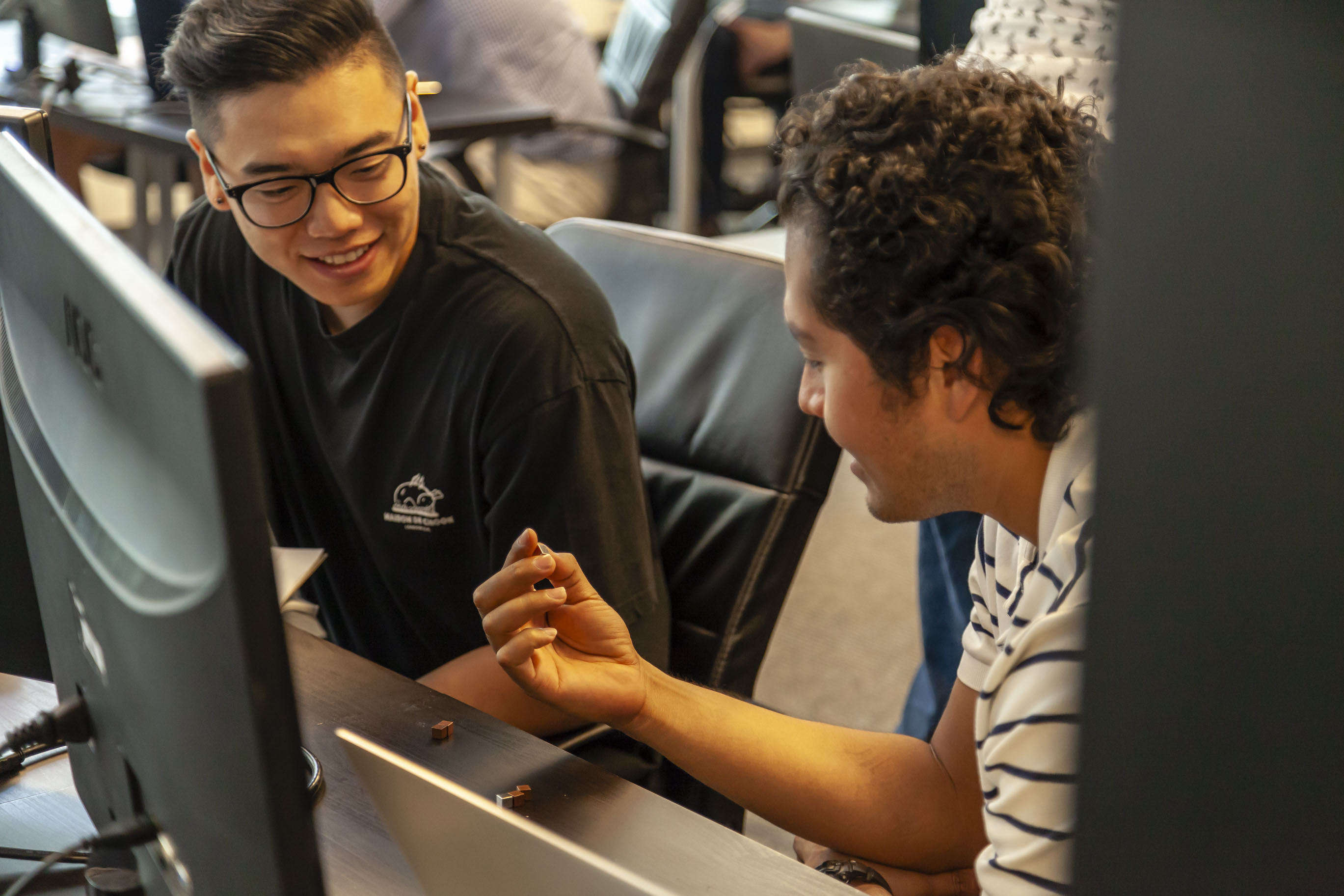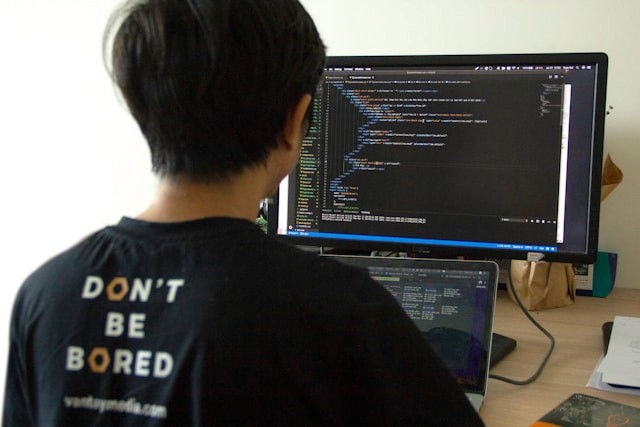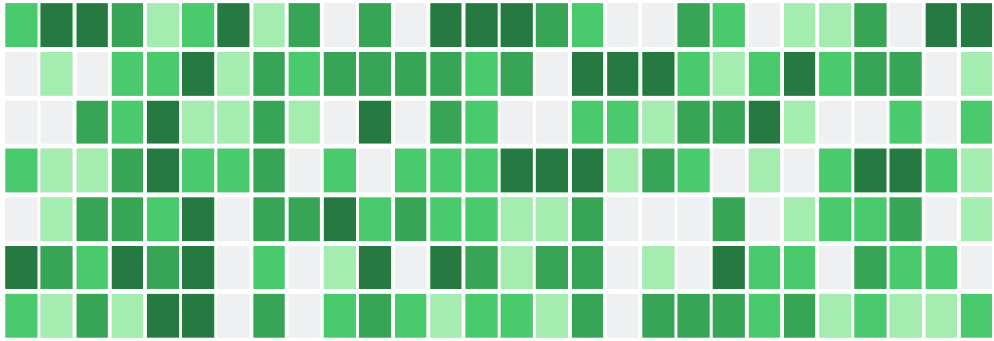Raw Data To Powerful Insights: How To Build Machine Learning Models
In the past, computer models were only able to follow strict sets of instructions to produce specific outcomes. While these types of computer programs are still used for many purposes today, they present limitations when computing more abstract sets of data.
With most traditional computer systems, if the program is asked to process a piece of data that doesn’t fit into its model, the program will return incorrect information or no results at all.
However, with machine learning models, programmers and data scientists are able to teach programs to “think” using large sets of data. When a machine learning model’s algorithm is trained on a dataset, it uses statistical analysis to produce results based on what it can infer from patterns within the dataset.
Essentially, machine learning algorithms will produce the most likely solution to a problem based on trends in the data it is trained on.
Creating these kinds of models and algorithms may sound too advanced for the average person, but that’s not entirely true. While it is advantageous to have a background in programming and statistics to better understand and employ the core concepts of machine learning, having these skills is not necessarily a prerequisite for learning to use this valuable tool.
There are many open-source libraries and resources dedicated to specific types of machine learning, and these are available for anyone to use for their own purposes. However, getting started on your own might be somewhat challenging if you are completely new to these concepts.
If you are interested in learning more about how to build machine learning models and would like to pursue a career in data science and programming, a machine learning bootcamp might be right for you.
In this article, we will take a look at some of the basic steps for how to build machine learning models, as well as benefits of attending a machine learning bootcamp to learn these core competencies.
What is a Machine Learning Model?
Machine learning models are a type of program that is used to identify patterns within a set of given data. Moreover, they can also be used to make predictions and decisions from data sets they have not previously been introduced to. When the machine learning algorithms behind these models are trained with large enough datasets, their outputs—the machine learning models themselves—can be used for a variety of softwares in countless industries.
What is a Machine Learning Algorithm?
Machine learning algorithms are at the core of every machine learning model. They are a code-based, mathematical method of handling the pattern-identifying and decision-making tasks required of a machine learning model. This algorithm is trained on a variety of data sources that pertain to its intended use, whether that be linear regressions and XGBoost or decision trees and random decision forests.
Put simply—without the algorithm there is no machine learning model.
Types of Machine Learning
Machine learning is simply the umbrella term used to describe the different forms of machine learning models that exist. The three main types are as follows:
Supervised Learning
Supervised machine learning begins by feeding an input dataset to the model’s algorithm. Then, depending on the outputs that are generated by the algorithm from that dataset, it is “rewarded” and optimized to generate more of a certain type of output over others. You’ll most commonly find this type of machine learning involved in image identification and other classification-based uses.
Unsupervised Learning
Unsupervised machine learning begins the same as supervised machine learning: the algorithm is fed a dataset to work with. However, in this type of machine learning, the algorithm is neither rewarded nor optimized for any specific type of output—it is trained for the purpose of clustering, a technique of separating and grouping data by shared characteristics.
Reinforcement Learning
Finally, there is reinforcement machine learning, which involves the algorithm training itself through environmental experimentation and having it continually react with its surroundings, not a dataset. You’ll most commonly find this kind of machine learning active in “self-driving” vehicles, which constantly analyze the shifting world around them while out on the road.
How to Build Machine Learning Models
Let’s say that we want to create machine learning models that can recognize the differences between pictures of trains and pictures of planes.
Here are some of the basic steps that we would need to take to accomplish this:
Gather the data set
Split the data set
Train the model
Fine-tune the hyperparameters
Test the model
Step 1: Gather the Data Set
Machine learning models require a dataset on which we can train our machine learning algorithm. For our purposes, we will need a large set of pictures of planes and trains, and each image will need to be labeled correctly, either as a plane or train, for our algorithm to accurately distinguish between the two.
This step may need to include formatting our images into a consistent configuration to improve the accuracy of our algorithm and streamline the picture recognition process.
Step 2: Split the Data
Once the dataset has been properly prepared for our image recognition algorithm, we will need to split the set into three categories:
Training Set – Our training set will be the primary data source that our machine learning models will use to identify patterns within the set, helping it to accurately distinguish between the two categories it is being trained on.
Validation Set – Once the training set has been fed into the machine learning models, we will need to fine-tune the model’s hyperparameters by adjusting the layers or nodes within our validation set.
Test Set – Once our machine learning models have been trained and their layers adjusted, the test will be used to assess the accuracy of its results.
Each one of these sets will be used in a different phase of creating our machine learning models. However, in order to understand how each of these sets plays a part in our image recognition algorithm, we first need to understand the next step of putting this model together.
Step 3: Train the Model
For our machine learning models to be able to accurately determine whether an image is of a train or a plane, we need to train them how to recognize the unique characteristics of each of these categories.
This can be accomplished using techniques such as convolutional neural networks (CNNs) to extract specific features from our images and recognize patterns among each category within our dataset.
Let’s break this down.
When data scientists introduce our models to the training set, there will be an input of data and an output of answers or solutions to the issue we are trying to solve.
However, there are individual layers of computation within this process that are not directly linked to the input or the output. These layers are made up of individual components known as nodes or neurons, and this group of neurons makes up what is known as a neural network.
Each neuron within the neural network is responsible for extracting specific features from our images to narrow down the probabilities of whether each image is of a train or a plane. Low-level neurons might be responsible for identifying features such as colors, shapes, and textures.
As the image is processed by the neural network, higher-level neurons might take into account more contextual or abstract features of the image, such as combinations of lower-level features, specific parts of planes and trains, and distinguishing textures.
By identifying specific features of each category and using spatial relationships to determine how different parts are configured, our image recognition machine learning algorithm will automatically begin to learn the differences between each of our categories.
Step 4: Fine-Tune the Hyperparameters
Hyperparameters are made up of several aspects within the machine learning model, and they ultimately govern how the model operates and learns from the data. Hyperparameters can include the learning rate, the number of neurons within each hidden layer, the number of times the model examines the dataset, and several others.
Before beginning the training process, our hyperparameters will already be determined, but we will still need to fine-tune these parameters to improve the performance of our machine learning model.
There are essentially two approaches to fine-tuning hyperparameters:
Manual Setting
Manually setting hyperparameters requires a considerable amount of know-how, and it depends largely on the experience and intuition of the programmer. When manually setting hyperparameters, a programmer selects individual hyperparameters and adjusts them according to what they believe will improve the performance of the algorithm.
This might include adjusting the learning rate, increasing or decreasing the batch size of the validation set, or modifying the number of hidden layers within the neural network.
Although manually adjusting the hyperparameters requires far less computational power, it can be extremely time-consuming, especially when working with large datasets or complex compilations of hyperparameters.
Hyperparameter Search
Performing a hyperparameter search is the process of automatically exploring and inspecting different value combinations to determine the optimum configuration of hyperparameters.
There are several different approaches for searching the hyperparameter space, and the strategy you choose will depend on what you are trying to accomplish.
Step 5: Test the Model
After configuring our hyperparameters, we will need to test the machine learning model using our test set to see how the model performs when analyzing unseen images.
When evaluating a machine learning model, we will take into consideration specific metrics like accuracy, precision, and recall.
As it pertains to testing a machine learning algorithm, precision refers to the ratio of true positive predictions to the overall number of positive predictions (true positives: true positives + false positives).
For example, if we have 400 pictures of trains in our dataset, and our model tells us that we have 600, our precision rate would be 2:3.
Recall, also known as the “true positive rate,” refers to the proportion of true positive predictions to actual positives within the dataset. So if our model is able to correctly identify 200 planes out of 400, our true positive rate would be 1:2.
These are both important metrics for evaluating the performance of our machine learning model, and they should ideally be close to perfect in order for our model to be effective.
Now that you have a better understanding of how a machine learning model is created and configured let’s take a look at what you can expect when attending a machine learning models bootcamp at LearningFuze.
In our machine learning module, you will learn to build, train, and test both supervised and unsupervised machine learning models using the latest machine learning technology employed by businesses today.
As these technologies become more widespread, their use cases will continue to expand throughout various industrial applications, and the need for experienced and specialized data scientists will continue to grow.
According to the US Bureau of Labor Statistics, the demand for data scientists is projected to increase by as much as 36% over the next decade. With an average median salary of just over $100k per year, this is a lucrative and exciting career choice for tech-savvy individuals who love numbers and problem-solving.
Become a Pro at Machine Learning Models
LearningFuze is Southern California’s only in-person educational institution that specializes in teaching valuable skills needed for a variety of tech careers. Founded in 2014, LearningFuze has gone on to develop advanced and innovative methods for teaching students from diverse backgrounds and knowledge levels.
Even if you are completely new to statistics and programming, our intuitive machine learning model bootcamp will equip you with the knowledge and skills you need to become a pro in a few short weeks.
After you complete our machine learning bootcamp, you can take advantage of our comprehensive career services to get connected with a huge network of tech employers across Southern California.
Additional Resources
You might like these

April 11, 2024
Find out what to look for to the best data analytics bootcamp. Spoiler: the reviews tell you everything you need to know.

Why learn Python? Discover the versatility, ease of use, and application of this fundamental coding language.

March 5, 2024
Explore data analysis jobs in the thriving fields of Data Analytics & Data Science. Discover roles like Data Analyst, Data Scientist, Data Engineer, and more.







